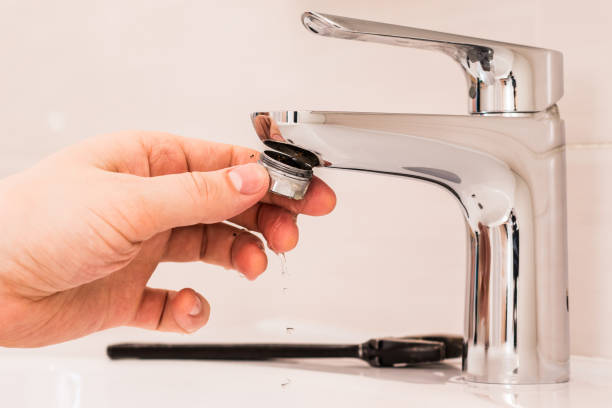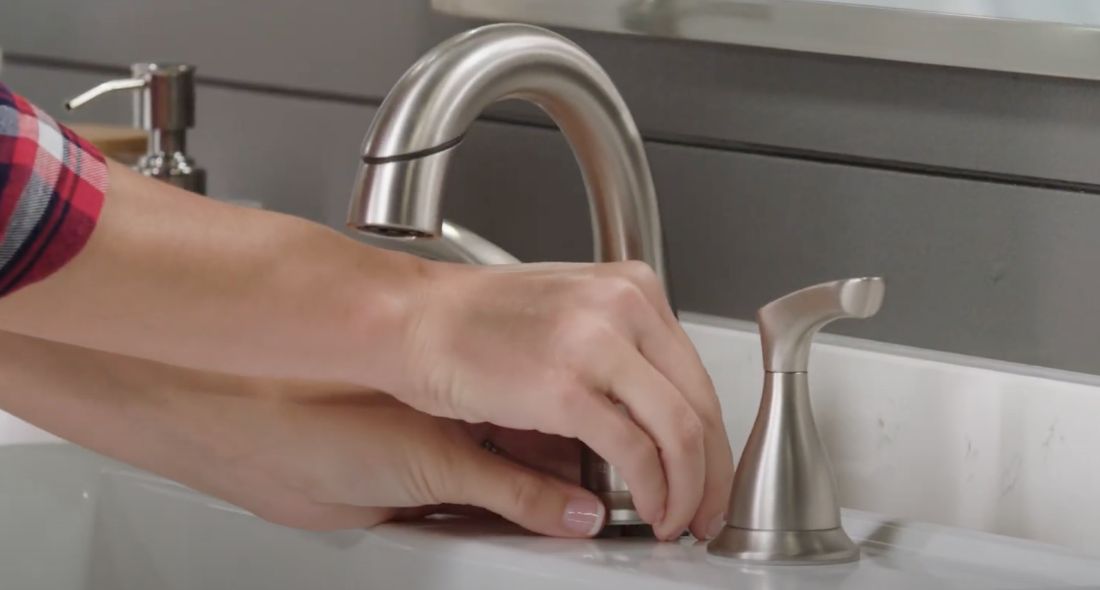Our Causes Behind Fixing a Dripping Faucet
Our Causes Behind Fixing a Dripping Faucet
Blog Article
What are your opinions about Water Dripping from Faucet: Why and How to Fix?

Dripping faucets may feel like a minor aggravation, yet their effect surpasses just the nuisance of the audio. From wasting water to sustaining unnecessary monetary prices and health and wellness dangers, overlooking a trickling faucet can bring about different consequences. In this article, we'll delve into why it's essential to resolve this common home issue promptly and successfully.
Wastefulness of Water
Ecological Effect
Trickling faucets add considerably to water wastefulness. According to the Environmental Protection Agency (EPA), a solitary tap leaking at one drip per second can waste more than 3,000 gallons of water each year. This not only pressures water sources yet additionally influences environments and wild animals based on them.
Step-by-Step Guide to Fixing a Dripping Tap
Tools Required
Prior to trying to repair a trickling faucet, collect the necessary tools, consisting of a flexible wrench, screwdrivers, replacement parts (such as washing machines or cartridges), and plumber's tape.
Typical Faucet Issues and Their Solutions
Determine the type of faucet and the details problem triggering the drip. Typical issues consist of worn-out washers, rusty valve seats, or damaged O-rings. Describe maker instructions or online tutorials for detailed advice on repairs.
Financial Expenses
Increased Water Bills
Beyond the environmental influence, leaking faucets can inflate water costs substantially. The built up waste over time converts into greater energy expenses, which might have been prevented with prompt repair work.
Potential Property Damages
In addition, extended leaking can lead to damage to components and surfaces bordering the faucet. Water buildup can trigger discoloration, rust, and even structural concerns if left unattended, causing additional repair work expenses.
Wellness Issues
Mold And Mildew and Mildew Growth
The consistent visibility of dampness from a leaking faucet creates an ideal setting for mold and mildew and mold growth. These fungi not only compromise indoor air top quality however also present wellness risks, specifically for individuals with breathing conditions or allergies.
Waterborne Illness
Stationary water in leaking faucets can end up being a breeding place for bacteria and other microorganisms, raising the threat of waterborne diseases. Impurities such as Legionella microorganisms grow in stationary water, possibly causing severe health problems when consumed or inhaled.
Do it yourself vs. Specialist Repair
Pros and Cons of Do It Yourself Repair Service
While some might attempt to take care of a dripping tap themselves, do it yourself repair services include their own collection of obstacles. Without proper expertise and tools, DIY attempts can aggravate the problem or lead to insufficient fixings, prolonging the issue.
Benefits of Working With a Specialist Plumber
Working with an expert plumber makes certain that the underlying cause of the trickling tap is attended to efficiently. Plumbing technicians have the competence and equipment to detect and repair faucet issues effectively, saving time and minimizing the risk of more damages.
Environmental Duty
Specific Payment to Preservation
Taking obligation for fixing leaking faucets aligns with more comprehensive efforts towards water preservation and ecological sustainability. Every individual's activities jointly make a substantial influence on preserving priceless resources.
Sustainable Living Practices
By focusing on punctual repairs and taking on water-saving routines, people add to sustainable living techniques that benefit both present and future generations.
Safety nets
Routine Maintenance Tips
To avoid trickling faucets, carry out routine upkeep such as cleansing aerators, inspecting for leaks, and replacing worn-out components quickly. Additionally, think about mounting water-saving devices or upgrading to more effective components.
Importance of Prompt Repairs
Addressing dripping faucets as soon as they're discovered protects against more water wastefulness and potential damage, inevitably conserving both water and money over time.
Effect On Home Value
Perception of Well-Maintained Building
Preserving a building in good condition, consisting of dealing with maintenance problems like leaking faucets, enhances its perceived value and desirability among potential buyers or tenants.
Impact on Resale Worth
Qualities with well-kept plumbing fixtures, including taps, command greater resale values in the property market. Attending to leaking faucets can contribute to a favorable perception throughout residential property assessments and negotiations.
Conclusion
Dealing with a dripping tap exceeds plain comfort; it's a crucial step towards conserving water, minimizing financial expenses, and guarding health and residential property. Whether through DIY repair services or specialist aid, doing something about it to repair leaking taps is a little yet impactful method to promote accountable stewardship of sources and contribute to a healthier, more lasting future.
How to Fix a Leaky Faucet: Step-by-Step Repair Guide
A leaky faucet may seem like a simple annoyance, but if it's not fixed promptly, that leak could cost hundreds to potentially thousands. From water damage to mold, mildew, and high water bills, even a tiny leak can be catastrophic if left unattended. Damage like this can even affect the overall value of your home, so it's important to take the right approach for leaky faucet repair. You may need the help of a plumber in some cases, but we've got a few tips you can try on how to fix a leaky faucet before calling the pros.
Four Faucet Types
When you're learning how to fix a leaky faucet, the first step is knowing what kind of faucet you're working with! There are four common types.
Cartridge Faucets
Cartridge faucets come in one- or two-handled varieties. In one-handled cartridge faucets, hot and cold water combines in a single cartridge. In the two-handled versions, hot and cold water are controlled separately and mixed in the faucet.
Ball Faucets
Ball faucets have a single lever you push up and down to adjust the pressure and rotate to change the temperature. A slotted metal ball controls the amount of water allowed into the spout.
Compression Washer Faucets
They're the oldest type of faucet, but they're still used in many homes — especially older ones. Compression faucets have two separate handles that, when turned, raise or lower the washer that seals a water valve. This valve stops water from flowing through the faucet when it is turned off.
Disc Faucets
Disc faucets rarely need to be repaired due to their maintenance-free design. The water flow is controlled by two discs — the upper one raises and lowers against a fixed lower disc, creating a watertight seal. If your disc faucet starts leaking, you may need to replace the seals or clean residue buildup from the inlets.
Fixing a Leaky Faucet
Step 1: Turn Off the Water
Whether you're learning how to fix a leaky bathtub faucet or how to fix a leaky kitchen faucet, always turn off the water supply to your working area when you're fixing a leak. The last thing you want is a flood added to your list of things to fix.
Look for the shutoff valves below your sink or around the tub and turn them clockwise to stop the water flow. If your faucet doesn't have shutoff valves, you may need to turn off the water for the whole house. Check to make sure it's off by turning the faucet on. If nothing comes out, you're ready to start the repair.
Step 2: Take Apart the Faucet
How you disassemble your faucet depends on the type of fixture you have. You can use a flathead screwdriver to remove the caps on top of the handle or handles for cartridge and compression faucets. Inside, you should see handle screws. Unscrew these with a screwdriver to remove the handle.
Disc- and ball-style faucets will typically have an inlet screw near the handle, and removing that will reveal the interior of the faucet.
Detach the Valve Stem
For cartridge- and compression-style faucets, you'll see the inner valve stem or cartridge once you remove the faucet handles. If you have a compression faucet, unscrew the brass valve stem. If you have a cartridge faucet, pull out the cartridge. If your cartridge has been in place for a while, it may require some tools or extra force to remove it due to mineral deposits.
Examine and Replace Parts
Once you've removed the parts, check them out to confirm what needs to be replaced. You may see corroded rubber washers, O-rings, stems, or cartridges. On a ball-style faucet, check the seats and springs for damage.
If you need to repair a leaky disc faucet, check the inlet and seals on the lower disc.
Once you determine what parts must be replaced, visit your local hardware store. Bring the damaged parts with you to ensure you can purchase the correct components to replace them.
Clean Valves and Faucet Cavity
If you've removed a stem or cartridge, you may notice mineral buildup in the faucet's threads. Use white vinegar to clean the valve seat by soaking it for a few minutes, then scrub it away with a soft toothbrush and rinse with warm water. You can also clean the interior of the faucet in the same way.
Reassemble the Faucet
Once your faucet is cleaned and the required parts have been replaced, it's time to reassemble it. Put the pieces back together and slowly turn the water supply back on. Doing this slowly is crucial because too much initial water pressure can damage the new hardware you've just installed.
https://homewarranty.firstam.com/blog/how-to-fix-leaky-faucet

We had been shown that write-up on How to Fix a Dripping or Leaky Faucet through a friend on our other blog. Do you know someone else who is in to the topic? Do not hesitate to promote it. Thanks a bunch for your time. Return soon.
Report this page